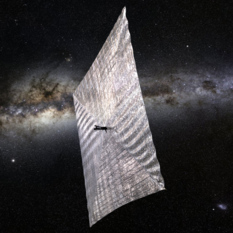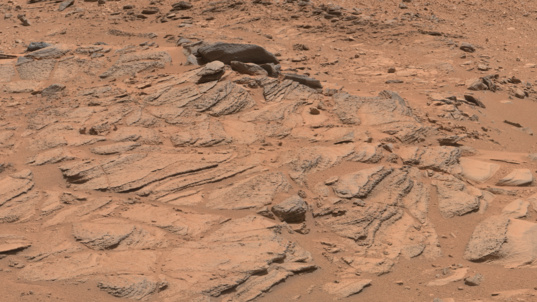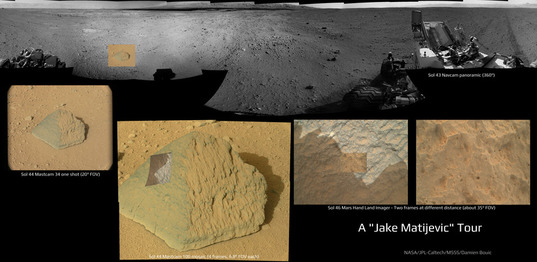Friday, December 26, 2014
218 Occurrences◄ 3091. Yehoshua ► Strong's Concordance Yehoshua: "the LORD is salvation," Moses' successor, also the name of a number of Isr. Original Word: יְהוֹשׁ֫וּעַ Part of Speech: proper name, masculine; proper name, of a location; proper name Transliteration: Yehoshua Phonetic Spelling: (yeh-ho-shoo'-ah) Short Definition: Joshua NAS Exhaustive Concordance Word Origin from Yhvh and yasha Definition "the LORD is salvation," Moses' successor, also the name of a number of Isr. NASB Translation Jeshua (28), Joshua (219). Brown-Driver-Briggs יְהוֺשׁוּעַ, יְהוֺשֻׁעַ and (later) יֵשׁוּעַ, proper name, masculine (& location, see 9 below) (׳י is salvation, or ׳י is opulence, compare אֱלִישָׁע, אֱלִישׁוּעַ, אֲבִישׁוּעַ & NesSK 1892, 573 f.; in any case it came to be associated with ישׁע, compare Matthew 1:21; on יֵשׁוּעַ see especially FräVOJ iv. 1890, 332 f. MüllSK 1892, 177 f. who cite analogue for change of וֹ to later ֵ֯, & Nesl.c.) — 1 Moses' successor, son of Nun, (ᵐ5 Ἰησοῦς) יְהוֺשׁוּעַ Deuteronomy 3:21; Judges 2:7; = יְהוֺשֻׁעַ Exodus 17:9,10,13,14; Exodus 24:13; Exodus 32:17; Exodus 33:11; Numbers 11:28; Numbers 13:16; Numbers 14:6,30,38; Numbers 26:65; Numbers 27:18,22; Numbers 32:12,28; Numbers 34:17; Deuteronomy 1:38; Deuteronomy 3:28; Deuteronomy 31:3,7,14 (twice in verse); Deuteronomy 31:23; Deuteronomy 34:9; Joshua 1:1 167t. Joshua; Judges 1:1; Judges 2:6,7,8,21,23; 1 Kings 16:34; 1 Chronicles 7:27; = יֵשׁוּעַ Nehemiah 8:17 (ᵐ5 Ἰησοῦς); according to P, name changed by Moses from הוֺשֵׁעַ q. v. Numbers 13:8,16 (ᵐ5 Αὑση) Deuteronomy 32:44 (ᵐ5 Ἰησοῦς). 2 יְהוֺשֻׁעַ a Bethshemite 1 Samuel 6:14,18 (ᵐ5 'Wshe, A Ἰησοῦς, ᵐ5L Ἰωσηε). 3 high priest after the restoration, son of Jehozadak יְהוֺשֻׁעַ (ᵐ5 Ἰησοῦς) Haggai 1:1,12,14; Haggai 2:2,4; Zechariah 3:1,3,6,8,9; Zechariah 6:11; = יְשׁוּעַ (ᵐ5 Ἰησοῦς) Ezra 2:2; Ezra 3:2,8; Ezra 4:3; Ezra 5:2; Ezra 10:18; Nehemiah 7:7; Nehemiah 12:1,7,10,26. 4 יְהוֺשֻׁעַ governor of Jerusalem under Josiah 2 Kings 23:8 (ᵐ5 Ἰησοῦς, ᵐ5L Ἰωσηε). 5 יֵשׁוּעַ (ᵐ5 Ἰησοῦς). head of one of the classes of priests 1 Chronicles 24:11, possibly also Ezra 2:36 = Nehemiah 7:39. 6 יֵשׁוּעַ (ᵐ5 Ἰησοῦς etc.), a Levitical family-name of frequent occurrence: a. Ezra 2:40; Ezra 3:9 = Nehemiah 7:43; Nehemiah 8:7; Nehemiah 9:4,5; Nehemiah 10:10; Nehemiah 12:8. b.2Chronicles 31:15; Ezra 8:33; Nehemiah 12:24. 7 יֵשׁוּעַ (ᵐ5 id.), father of a builder at the wall Nehemiah 3:19, perhaps = 8 a Judaite family-name (ᵐ5 id.), Ezra 2:6 = Nehemiah 7:11 (compare SmListen 12). 9. proper name, of a location in south of Judah Nehemiah 11:26 בְּיֵשׁוּעַ (ᵐ5 ἐν Ἰησού, ᵐ5L ἐν Σουα). יְהוֺשֻׁעַ, יֵשׁוּעַ proper name. Strong's Exhaustive Concordance Jehoshua, Jehoshuah, Joshua Or Yhowshua {yeh-ho-shoo'-ah}; from Yhovah and yasha'; Jehovah-saved; Jehoshua (i.e. Joshua), the Jewish leader -- Jehoshua, Jehoshuah, Joshua. Compare Howshea', Yeshuwa'. see HEBREW Yhovah see HEBREW yasha' see HEBREW Howshea' see HEBREW Yeshuwa' Forms and Transliterations בִּיהוֹשֻׁ֖עַ ביהושע וִֽיהוֹשֻׁ֔עַ וִֽיהוֹשֻׁ֣עַ וִיהוֹשֻׁ֕עַ וִיהוֹשֻׁ֖עַ וִיהוֹשֻׁ֙עַ֙ וִיהוֹשֻׁ֣עַ וִיהוֹשֻׁ֨עַ וִיהוֹשֻׁ֪עַ ויהושע יְ֠הוֹשֻׁעַ יְהוֹשֻֽׁעַ׃ יְהוֹשֻׁ֑עַ יְהוֹשֻׁ֔עַ יְהוֹשֻׁ֖עַ יְהוֹשֻׁ֗עַ יְהוֹשֻׁ֙עַ֙ יְהוֹשֻׁ֛עַ יְהוֹשֻׁ֜עַ יְהוֹשֻׁ֡עַ יְהוֹשֻׁ֣עַ יְהוֹשֻׁ֣עַ ׀ יְהוֹשֻׁ֣עַ־ יְהוֹשֻׁ֤עַ יְהוֹשֻׁ֥עַ יְהוֹשֻׁ֧עַ יְהוֹשֻׁ֨עַ יְהוֹשֻׁעַ֒ יְהוֹשֻׁעַ֙ יְהוֹשֻׁעַ֮ יְהוֹשׁ֔וּעַ יְהוֹשׁ֣וּעַ יהושוע יהושע יהושע־ יהושע׃ לִֽיהוֹשֻׁ֑עַ לִֽיהוֹשֻׁ֗עַ לִיהוֹשֻׁ֣עַ לִיהוֹשֻׁ֥עַ ליהושע bî·hō·wō·šu·a‘ bihoShua bîhōwōšua‘ lî·hō·wō·šu·a‘ lihoShua lîhōwōšua‘ vihoShua wî·hō·wō·šu·a‘ wîhōwōšua‘ yə·hō·wō·šu·a‘ yə·hō·wō·šū·a‘ yə·hō·wō·šu·a‘- yehoShua yəhōwōšua‘ yəhōwōšūa‘ yəhōwōšua‘- Links Interlinear Greek • Interlinear Hebrew • Strong's Numbers • Englishman's Greek Concordance • Englishman's Hebrew Concordance • Parallel Texts Englishman's Concordance Strong's Hebrew 3091 218 Occurrences bî·hō·wō·šu·a‘ — 1 Occ. lî·hō·wō·šu·a‘ — 4 Occ. wî·hō·wō·šu·a‘ — 17 Occ. yə·hō·wō·šu·a‘ — 196 Occ. Exodus 17:9 HEB: מֹשֶׁ֤ה אֶל־ יְהוֹשֻׁ֙עַ֙ בְּחַר־ לָ֣נוּ NAS: So Moses said to Joshua, Choose men KJV: said unto Joshua, Choose us out INT: Moses to Joshua Choose men Exodus 17:10 HEB: וַיַּ֣עַשׂ יְהוֹשֻׁ֗עַ כַּאֲשֶׁ֤ר אָֽמַר־ NAS: Joshua did as Moses KJV: So Joshua did as Moses INT: did Joshua after told Exodus 17:13 HEB: וַיַּחֲלֹ֧שׁ יְהוֹשֻׁ֛עַ אֶת־ עֲמָלֵ֥ק NAS: So Joshua overwhelmed Amalek KJV: And Joshua discomfited Amalek INT: overwhelmed Joshua Amalek and his people Exodus 17:14 HEB: וְשִׂ֖ים בְּאָזְנֵ֣י יְהוֹשֻׁ֑עַ כִּֽי־ מָחֹ֤ה NAS: and recite it to Joshua, that I will utterly KJV: [it] in the ears of Joshua: for I will utterly INT: and rehearse the ears to Joshua for will utterly Exodus 24:13 HEB: וַיָּ֣קָם מֹשֶׁ֔ה וִיהוֹשֻׁ֖עַ מְשָׁרְת֑וֹ וַיַּ֥עַל NAS: arose with Joshua his servant, KJV: and his minister Joshua: and Moses INT: arose Moses Joshua his servant went Exodus 32:17 HEB: וַיִּשְׁמַ֧ע יְהוֹשֻׁ֛עַ אֶת־ ק֥וֹל NAS: Now when Joshua heard the sound KJV: And when Joshua heard the noise INT: heard Joshua the sound of the people Exodus 33:11 HEB: הַֽמַּחֲנֶ֔ה וּמְשָׁ֨רְת֜וֹ יְהוֹשֻׁ֤עַ בִּן־ נוּן֙ NAS: his servant Joshua, the son KJV: but his servant Joshua, the son INT: the camp his servant Joshua the son of Nun Numbers 11:28 HEB: וַיַּ֜עַן יְהוֹשֻׁ֣עַ בִּן־ נ֗וּן NAS: Then Joshua the son of Nun, KJV: And Joshua the son of Nun, INT: answered Joshua the son of Nun Numbers 13:16 HEB: בִּן־ נ֖וּן יְהוֹשֻֽׁעַ׃
THE SACRED FEMININE AZTEC <--> EGYPT ALIGNMENT Home WHITE BUFFALO CALF PRODUCTIONS "SPIRIT OF SAGITTARIUS" EARTH MEDICINE WHEEL THE LEGEND BUFFALOS SACRED SITE >>>> PIPESTONE PROPHECY OF THE CONDOR & EAGLE AZTEC GODDESS IN THE NORTH AZTEC <--> EGYPT ALIGNMENT EGYPTIAN GODDESSES "WOMYN THINKING ROUND EARTH" CONTACT Earth's "sacred geology" was acknowledged by our ancestors who constructed pyramids at specific places in alignment with the stars & with each other. The EARTH MEDICINE WHEEL serves to restore balance & harmony through honouring these sacred sites and the spirits of the Earth Keepers dwelling at these places today.
 |
|
|||||
|
||||||||||||||||||||
Thursday, December 25, 2014
Monday, November 24, 2014
Search Results | The Planetary SocietyOlivine can be altered to the mineral serpentine and this mineral is found in kimberlites, ophiolites and gabbros that started out with large amounts of olivine at one time. Some serpentine (especially from Snarum, Norway) has pseudomorphed crystals of serpentine preserving the outward shape of what was originally an olivine crystal. Olivine is also found in many iron-nickel meteorites. Not just as small grains but as significantly sized crystals sometimes occupying over 50% of the meteorite's volume. Thinly cut slices of these meteorites are extremely attractive with the polished steel gray of the iron and the embedded grains of gemmy green olivine. The effect produces the closest mineral equivalent to stained glass artwork. PHYSICAL
Search Results | The Planetary Societyhttp://www.planetary.org/search-results.html?q=the%20cone%20nebula&x=0&y=0
JOIN THE
Search Results
About 76 results (0.44 seconds)
|
|
Items 1 - 48 of 86 ... NGC 1805 - The Heart Nebula · NGC 6992 - The Eastern VeilNebula · NGC 2264 - A Story about a Cone, a Fox and a Christmas Tree.
www.planetary.org/multimedia/space-images/universe/
|
|
Items 1 - 48 of 86 ... NGC 6992 - The Eastern Veil Nebula · NGC 1805 - The Heart Nebula · NGC 2264 - A Story about a Cone, a Fox and a Christmas Tree.
www.planetary.org/explore/space-topics/.../amateur_old.html?...
|
|
... of the spacecraft being enclosed inside the payload fairing (the rocket's "nose cone") and hoisted to the top of the Atlas V. ... NGC 6960, The Veil Nebula.
www.planetary.org/blogs/emily-lakdawalla/index.jsp?pastpage...
|
|
Items 337 - 384 of 2361 ... NGC 6992 - The Eastern Veil Nebula · Gibbous Saturn ... NGC 2264 - A Story about a Cone, a Fox and a Christmas Tree · 3D route map ...
www.planetary.org/multimedia/space-images/index.jsp?...page...
|
|
Items 385 - 432 of 2841 ... NGC 1805 - The Heart Nebula · NGC 6992 - The ... Dione and Friends · NGC 2264 - A Story about a Cone, a Fox and a Christmas Tree.
www.planetary.org/multimedia/space-images/index_old.html?...
|
|
Items 97 - 144 of 997 ... NGC 6992 - The Eastern Veil Nebula · NGC 1805 - The ... NGC 2264 - A Story about a Cone, a Fox and a Christmas Tree · Outcrops in ...
www.planetary.org/multimedia/space-images/index.jsp?...3
|
|
Items 97 - 144 of 1002 ... NGC 6992 - The Eastern Veil Nebula · Gibbous Saturn and ... NGC 2264 - A Story about a Cone, a Fox and a Christmas Tree · Outcrops in ...
www.planetary.org/explore/space-topics/space.../amateur_old.html?...
|
|
Nov 4, 2011 ... ... being enclosed inside the payload fairing (the rocket's "nose cone") and hoisted to the top of the Atlas V. ... NGC 6960, The Veil Nebula.
www.planetary.org/blogs/blog-archive.html?a_aid=3598aabf...
|
|
... of the spacecraft being enclosed inside the payload fairing (the rocket's "nose cone") and hoisted to the top of the Atlas V. ... NGC 6960, The Veil Nebula.
planetary.org/blogs/index.jsp?cms_static=true&com...
|
|
Items 433 - 480 of 3029 ... NGC 6992 - The Eastern Veil Nebula · Gibbous Saturn ... NGC 2264 - A Story about a Cone, a Fox and a Christmas Tree · 3D route map ...
www.planetary.org/multimedia/space-images/image-search.html?...
|
1
2
3
4
5
6
7
8
In This Section
LightSail - Flight by Light
Support LightSail!
In 2016, The Planetary Society’s LightSail program will take the technology a step further.
JOIN THE
PLANETARY SOCIETY
Our Curiosity Knows No Bounds!
Become a member of The Planetary Society and together we will create the future of space exploration.
Resembling a nightmarish beast rearing its head from a crimson sea, this monstrous object is actually a pillar of gas and dust. Called the Cone Nebula because of its conical shape in ground-based images, this giant pillar resides in a turbulent star-forming region.
Cone Nebula
Resembling a nightmarish beast rearing its head from a crimson sea, this monstrous object is actually a pillar of gas and dust. Called the Cone Nebula because of its conical shape in ground-based images, this giant pillar resides in a turbulent star-forming region. Taken by the Hubble Space Telescope in April 002, this image shows the upper 2.5 light-years of the nebula, a height that equals 23 million round trips to the moon. The entire nebula is 7 light years in length. The Cone Nebula resides 2,500 light-years away in the constellation Monoceros.
Radiation from hot, young stars has slowly eroded the nebula over millions of years. Ultraviolet light heats the edges of the dark cloud, releasing gas into the relatively empty region of surrounding space. There, additional ultraviolet radiation causes the hydrogen gas to glow, which produces the red halo of light seen around the pillar. A similar process occurs on a much smaller scale to gas surrounding a single star, forming the bow-shaped arc seen near the upper left side of the Cone. This arc is 65 times larger than the diameter of our solar system. The blue-white light from surrounding stars is reflected by dust. Background stars can be seen peeking through the evaporating tendrils of gas, while the turbulent base is pockmarked with stars reddened by dust. Over time, only the densest regions of the Cone will be left. Inside these regions, stars and planets may form.
The Cone Nebula is a cousin of the M16 pillars, which the Hubble imaged in 1995. Monstrous pillars of cold gas like the Cone and M16 are common in large regions of star birth. Astronomers believe the pillars are incubators for developing stars.
Image credit: NASA, H. Ford (JHU), G. Illingworth (UCSC/LO), M. Clampin (STScI), G. Hartig (STScI), the ACS Science Team and ESA
Radiation from hot, young stars has slowly eroded the nebula over millions of years. Ultraviolet light heats the edges of the dark cloud, releasing gas into the relatively empty region of surrounding space. There, additional ultraviolet radiation causes the hydrogen gas to glow, which produces the red halo of light seen around the pillar. A similar process occurs on a much smaller scale to gas surrounding a single star, forming the bow-shaped arc seen near the upper left side of the Cone. This arc is 65 times larger than the diameter of our solar system. The blue-white light from surrounding stars is reflected by dust. Background stars can be seen peeking through the evaporating tendrils of gas, while the turbulent base is pockmarked with stars reddened by dust. Over time, only the densest regions of the Cone will be left. Inside these regions, stars and planets may form.
The Cone Nebula is a cousin of the M16 pillars, which the Hubble imaged in 1995. Monstrous pillars of cold gas like the Cone and M16 are common in large regions of star birth. Astronomers believe the pillars are incubators for developing stars.
Image credit: NASA, H. Ford (JHU), G. Illingworth (UCSC/LO), M. Clampin (STScI), G. Hartig (STScI), the ACS Science Team and ESA
A widefield view on the NGC 2264 region, which contains the Cone Nebula, the Christmas Tree Cluster, the Snowflake Cluster, and the Fox Fur Nebula. All are located within the constellation Monoceros.A.M. /P.M. Amazing PlanetA widefield view on the NGC 2264 region, which contains the Cone Nebula, the Christmas Tree Cluster, the Snowflake Cluster, and the Fox Fur Nebula. All are located within the constellation Monoceros.


Home » Blogs » Emily Lakdawalla » 2014

GSA 2014: The puzzle of Gale crater's basaltic sedimentary rocks
Posted by Emily Lakdawalla
2014/10/24 00:31 UTC
Topics: mineralogy and petrology, geology, explaining science,Mars, Curiosity (Mars Science Laboratory)
I've just come back from a quick trip to Vancouver to attend two days of the annual Geological Society of America (GSA) conference. I went to it specifically to hear the latest Curiosity results, and saw the first indications of how Curiosity is going to be changing our view of Martian geology. It's a subtle but important shift in how we imagine ancient Mars. It relates to water, of course.
There are two main unifying points to the Curiosity results I saw at GSA. First: Every rock that Curiosity has seen is sedimentary. Second: nearly all of those sedimentary rocks have the bulk composition of an igneous rock called basalt. If you're a geologist, those two statements almost seem contradictory. Sedimentary rocks say "Mars was wet." Basaltic composition says "Mars was dry." Let me explain why, and then I'll try to explain where we go from here.
At GSA, several presenters described a diverse array of sedimentary rocks seen by Curiosity. Linda Kah, presenting on behalf of Becky Williams, talked about seeing "a series of spectacular sedimentary deposits" including "interbedded and very well lithified conglomerates, fluvial sands, sheet sands, and other, varied sedimentary environments." Conglomerates are made of large rock chunks, which need fast-moving water to form. "Fluvial" means a river environment -- sediments laid down by water running in channels, building up and tearing down sand bars. Sand sheets form in windy environments. Here are a couple of examples of different types of sedimentary rocks that showed up over and over in talks, some of the greatest hits of Curiosity's Mars Hand Lens Imager (MAHLI), in order of largest grain size to smallest:
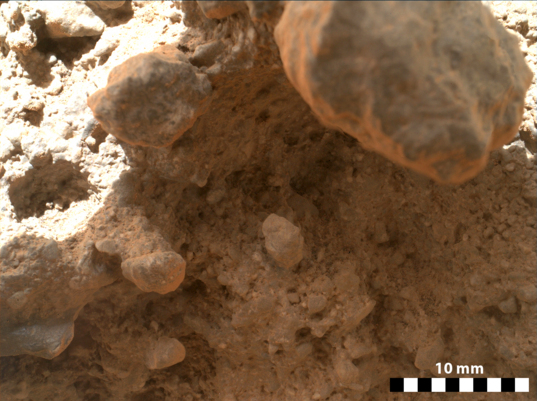
NASA / JPL / MSSS
Altar Mountain
Curiosity investigated a spot called Altar Mountain at the Darwin waypoint on sol 394. This MAHLI image, taken of a mostly shadowed spot on the outcrop, shows that Bardin Bluffs is a poorly sorted pebble conglomerate. Most of the grains are subangular, with gravel measuring 4 to 10 millimeters across. The poor sorting and disorganization suggests it was deposited rapidly.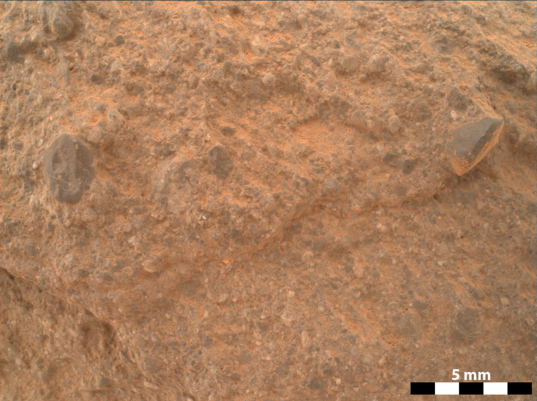
NASA / JPL / MSSS
Bardin Bluffs
Curiosity investigated a spot called Bardin Bluffs at the Darwin waypoint on sol 394. This MAHLI image, taken of a shadowed spot on the outcrop, shows that Bardin Bluffs is a pebbly sandstone. It is gravel-rich, with a sandy matrix and granule- to pebble-sized clasts that are subrounded to rounded in shape. The way that the grains touch each other indicates they were deposited by water. Grains are lumpy and pock-marked, indicating that they collided with each other as they were being transported.
NASA / JPL / MSSS
MAHLI view of "Gillespie Lake," a coarse sandstone on the edge of Yellowknife Bay, sol 132
Curiosity held its MAHLI camera within 3 centimeters of a ledge on sol 132 to examine its grains up close. The investigation revealed the rock to be a coarse sandstone, made up of cemented grains of a range of sizes. The biggest grains at lower left are about 2 millimeters long, which is larger than sand; technically, they are classified as "granules." The whole view is about 4.3 centimeters wide; at full resolution, it is about 26.1 microns per pixel.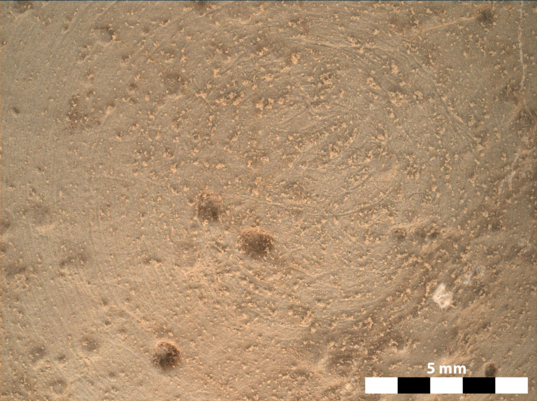
NASA / JPL / MSSS
Wernecke, Curiosity sol 169
Curiosity brushed and then imaged a target called Wernecke with its MAHLI camera on sol 169, as the rover was preparing to drill for the first time. MAHLI was able to pose within only 1 centimeter of the surface of Wernecke, and so achieved its highest resolution of about 10 microns per pixel. MAHLI cannot resolve individual grains within the rock, so the grain size is smaller than fine sand. The rock does have small nodules, informally called "measles" by the team. Some team members think they were once gas bubbles within the wet sediment, some (but not all) of which later filled with minerals. You can also see that the brush has scratched the surface, indicating that the rock is soft.
Grain size tells you something about the energy of the fluid that was transporting the sediment grains. But MAHLI and Mastcam can also see larger-scale sedimentary structures in the way that the rocks are put together. In separate talks, Dave Rubin and Melissa Rice identified a diverse array of geologic settings in which these sedimentary rocks were deposited. Rubin pointed out aeolian (windblown) sands at Shaler, but said there were also examples of compound cross bedding, which is what you get in fluvial (river) settings.
Rubin also spent quite a while talking about the south-dipping beds at the Kimberley, as did Melissa Rice. She talked about how they these stacks of south-dipping bedded sandstones climbed upward, up elevation, toward the south. Really the only way to do that is if they represent the toe of what she called an "aggradational system" -- essentially, a river delta, where a faster-moving body of water, which can carry larger sediment grains, meets a slow-moving or still body of water. The bigger sediment gets dropped, building out a deposit of sands. It's a pretty big deposit, too; the "striated unit" at the Kimberley that represents these south-dipping beds covers an area of two square kilometers.

NASA / JPL / MSSS / Doug Ellison
The north edge of Kimberley, Curiosity sol 580
While parked about 4 meters from the north edge of Kimberley, Curiosity took almost 250 images of the outcrop with the higher-resolution Mastcam. The rock layers are tilted gently away from the rover. In places, windblown sand has piled up against the rock. Small cascades of loose material disturb the drifted sand in places.
Water interacted with all of these rocks more than once. Many of these rocks -- mudstones, siltstones, and sandstones -- contain fractures with mineral fills, evidence for mineral-rich water fracturing the existing rocks and precipitating out mineral deposits -- and yet, despite all that water running around, these rocks still have a basaltic composition.
So I guess it's a good time to talk about basalt. Here, have some basalt.
Imperial College Rock Library
Basalthttp://www.planetary.org/blogs/emily-lakdawalla/2014/10231731-gsa-2014-the-puzzle-of-gale.html
Basalt is one of the most common types of rock on planetary surfaces. It is a dark-colored, igneous rock that usually contains the minerals olivine, pyroxene, and feldspar. This basalt came from Mauna Loa, Hawaii. To learn much more about this rock, visit the Imperial College Rock Library.
All the terrestrial planets -- Earth, Mars, Venus, Mercury, and the honorary terrestrial planets the Moon, Io, and Vesta -- have vast regions that are covered with basalt. Basalt is an igneous rock, meaning it solidified from a melt, so is made of mineral crystals that are intergrown with each other. Basalt is very dark in color, and typically has three main minerals: green olivine and black pyroxene (both of which are rich in iron and magnesium), plus dark gray feldspar (which bears calcium and sodium). Relative to many other interesting kinds of rocks that you find on Earth, basalt is high in iron, magnesium, and calcium, and low in silicon, aluminum, and potassium.
Basalt is common in the solar system, but it doesn't get along with water very well. Water chemically attacks the crystal structure of olivine, pyroxene, and feldspar. It weathers those primary igneous minerals into other minerals that have tons of water stuffed into their crystal structures, such as clay minerals. Water oxidizes the abundant iron and in basalt, turning rocks from dark gray or green to red. If the water can flow away from the rock it's attacking, it can leach out and remove iron, magnesium, and calcium, leaving behind a rock that's relatively enriched in silicon and aluminum.
Chemical weathering of basalt happens fast, in geologic terms. It goes even faster if you bust up a piece of basalt into lots of tiny little pieces, making a large surface area for water to work on. So if you take a basalt, fracture it up, and then get it wet -- which is what you need to do to make a sedimentary rock out of basalt -- you would expect the resulting rock not to look very much like basalt.
Sedimentary rocks that have a basaltic mineral composition are not common on Earth. If you start with a basalt, and break it up due to physical or chemical weathering, and then you transport it somewhere in a river and deposit it in a lake or ocean, water will act on the basaltic rock fragments, carry away their iron and magnesium, and leave behind a much more silicon- and aluminum-rich sedimentary rock. Instead, it would be made of clays.
But Curiosity's rocks have a basaltic composition -- rich in iron and magnesium, less so in aluminum and silicon. They do have high potassium for basaltic rocks, which has had the scientists scratching their heads. And there is at least one rock that does contain a fair amount of clay, the one they drilled into at Yellowknife Bay. But it's still pretty puzzling that so many of Curiosity's rocks are sedimentary, and yet they're basaltic in composition. In fact, there's only one rock that members of the Curiosity team have specifically identified as being a basalt -- not a sedimentary rock of basalt composition, but an actual basaltic lava rock. They've even written a paper about it and published it in Science: Jake Matijevic, the Martian mugearite. It's the first rock they examined with the robotic arm:
Except, it turns out, Jake Matijevic is not an igneous rock. Oops!
In one of his three GSA talks, Ken Edgett dropped the surprising statement that Jake Matijevic is actually a sedimentary rock. Ken (who is the principal investigator on the MAHLI camera) explained that over the course of the primary mission, as Curiosity examined a wide variety of rocks up close, he and the MAHLI team began to notice similarities among certain classes of rocks. Rock localities that really puzzled them early on in the mission started to become comprehensible as they saw more and more examples of Gale crater rocks and the team -- as Ken put it -- "calibrated our brains" to be able to see clearly what the rock types actually were. They saw Jake Matijevic on sol 47. More than an Earth year later, at an outcrop called Bungle Bungle, they saw another rock, Jum Jum, that is a dead ringer for Jake M. And it's not a lava rock, it's a sandstone. (Note: the idea that Jake M is a sedimentary, not igneous, rock is likely not the unanimous opinion of the Curiosity team. But the MAHLI team seems to be convinced.)
In retrospect, Ken said, he could look back at Mastcam images of Jake Matijevic and see pebbles sticking out of it. Now it's obvious, -- to him -- that it's a coarse-grained sandstone. But in the days after they landed, they didn't know that yet, didn't know what to expect to see, and they didn't see the dark, coarse-grained sandstone for what it was.
That realization has led Ken to what can only be described as a crisis in confidence that he (and, by extension, a large fraction of Mars geomorphologists) actually know what they're looking at on Mars. He explained this in another of his talks, focusing on what he can see in Mars Reconnaissance Orbiter Context Camera images. Back in 2000, Ken and Mike Malin published a paper in Science that first claimed that clastic sedimentary rocks were widespread on Mars. For more than a decade, Ken said, they thought they knew what sedimentary rocks on Mars looked like. They were light-toned and layered, and not very resistant to erosion. Opportunity confirmed that, examining the widespread soft-as-butter sulfate-rich bedrock of Meridiani planum.

NASA / JPL-Caltech / Cornell / enhancement by Stuart Atkinson
Rock type contrasts
The bedrock at Opportunity's landing site is light-toned and very easily eroded, so that it forms a flat pavement everywhere, while other erratic igneous rocks like Marquette Island, shown here, perch on the surface, resistant to erosion. Marquette Island is thought to have come from deep beneath Mars' surface, thrown to Meridiani Planum in an impact.
But Curiosity's discovering something different. Curiosity is seeing rocks like those at Point Lake, which, Ken said, were the cause of long-term discussion about what they were. Were they dark-colored, massive sedimentary rocks, or dark-colored, massive volcanic flows? It's the most fundamental description of a rock you can make! And they couldn't figure it out. Not right away. But as time has gone on and Curiosity has seen other occurrences of similar rocks -- such as the Rensslaer rock at the Cooperstown science waypoint -- which are clearly sandstones, the Curiosity team has learned that Martian sedimentary rocks can have the composition of basalt and the color of basalt and be resistant to erosion like basalt and preserve impact craters like basaltic flows do and yet be sedimentary.

NASA / JPL / MSSS / Emily Lakdawalla
Point Lake, Curiosity sol 302
Point Lake is a dark, massive unit of rock that caps the Shaler sandstone. Members of the Curiosity team have hotly debated whether Point Lake is an igneous rock (a lava flow) or a sedimentary rock (another sandstone, just darker and more erosion-resistant than the Shaler rock).
And that's made Ken go back to the drawing board with his interpretation of orbital photos. It used to be that he thought light-toned rocks that are not resistant to erosion so don't preserve craters well were sedimentary, and dark-toned rocks that did resist erosion and did preserve impact craters were igneous. But now that's been turned upside down. Sedimentary rocks can be dark. They can preserve craters. "Holy crap, what do we do now?" he asked. "I've reached a point where I'm not sure I can tell you on any given crater with a heavily cratered floor whether it's sedimentary or volcanic. I can't tell you. I don't know. If you don't see vents, I don't know." He gave this image as an example -- the more heavily cratered deposits within Elorza crater he would once have thought were lava flows, but he's no longer sure.

NASA / JPL / MSSS
Cratered caprock within Elorza crater, Mars
Elorza is a 45-kilometer crater located a bit east of Valles Marineris. Its floor contains several deposits of material with heavily cratered surfaces, overlying a less-cratered substrate. The heavily cratered material is more resistant to erosion and better able to preserve impact craters than the more easily eroded material that it lies on top of.
This particular talk of Ken's ended with several minutes to spare for questions and comments, and Mars mapper extraordinaire Tim Parker made a striking one. He talked about how the Hesperian age of Mars is distinguished by widespread lava flows -- or so we think. Aloud, he wondered: "Is the Hesperian system really a sedimentary system?" Ken didn't have a good answer to that -- except that he thought it was the right kind of question to be asking.
Curiosity, up there on Mars, is finding absolutely nothing but sedimentary rocks that still have a basaltic composition. It's kind of mind-boggling. It shouldn't be happening (based upon our understanding of Earth geology), so clearly there is something here that is not at all like Earth.
The first and arguably most important difference between Mars' sedimentary rocks as seen by Curiosity and sedimentary rocks investigated by geologists on Earth is their age. The rocks Curiosity is studying are more than 3.5 billion years old, possibly quite a bit older. When Earth was that old, it was a different place. It's very likely that Earth's rocks were predominantly basaltic then, too. Sedimentary rocks are made out of other source rocks. If all you have is basaltic rocks to work with, your sedimentary rocks are going to look more like basaltic rocks. There was an entertaining presentation by Ezat Heydari that showed that you can pretty much explain the entire diversity of rock compositions seen by Curiosity as a simple mix of two endmembers: chunks of broken-up basalt, and a finer-grained material that looks like the ash you'd get from explosive eruptions of very iron- and magnesium-rich komatiites. Nowadays, Earth makes its sedimentary rocks from all kinds of source rocks, most often from much more silicon- and aluminum-rich rocks that have experienced processing through Earth's active rock cycle multiple times. Mars hasn't had that luxury. In a sense, Mars is giving us a chance to look at what sedimentary rocks on Earth might once have looked like, 3.5 or more billion years ago.
But there's still the pesky problem of having rocks made of very fine-grained sediments that, ought not to have a basaltic composition, because the very water that is required to transport, deposit, and lithify sediments into rocks should've also attacked the basaltic minerals and turned them into something else -- a fact that Allan Treiman emphasized in his presentation on Curiosity CheMin results. That's telling us something important, too. For one thing, Allan said, it suggests that the way that Mars turned basaltic lava rock into sediments was not through the action of water -- that Mars broke basalt into basaltic grains through mechanical rather than chemical weathering. And then whatever water-related experience moved those sediments from their point of origin and deposited them into layers in Gale must have happened quite fast, with the water going away very quickly.
All in all, the picture that Curiosity is painting is of a Mars where water played an important role in making nearly every rock that now covers the surface, and yet water's appearances in the geologic record were very, very brief. A Mars that has been mostly incredibly dry except for very rare occasions, concentrated mostly in Mars' earliest history. It makes sense, in a way, because a Mars where water was abundant would not preserve the record of ancient impact craters and landforms that Mars has. Yet it's still a little hard to understand how Mars could have enough water for every rock we see to be sedimentary, yet so little water that we can see a good geologic record of events that happened more than 3.5 billion years ago.
The Mars water pendulum is constantly swinging back and forth. Before the space age, Mars was wet. After Mariner and Viking, it was dry. After Mars Global Surveyor, it was wetter, and the recent orbiters have made it seem wetter yet, with their discoveries of clays and sulfates and carbonates and chlorides. With Curiosity's results, I feel like the "water on Mars" argument is bifurcating; Mars was never wet like Earth, but it is not dry like the Moon. Water is crucially important to Mars' story, and yet Mars is drier than the driest conceivable environment on Earth. In the end, it's just Mars, and it has its own unique story, different from all the other planets.
Subscribe to:
Posts (Atom)















